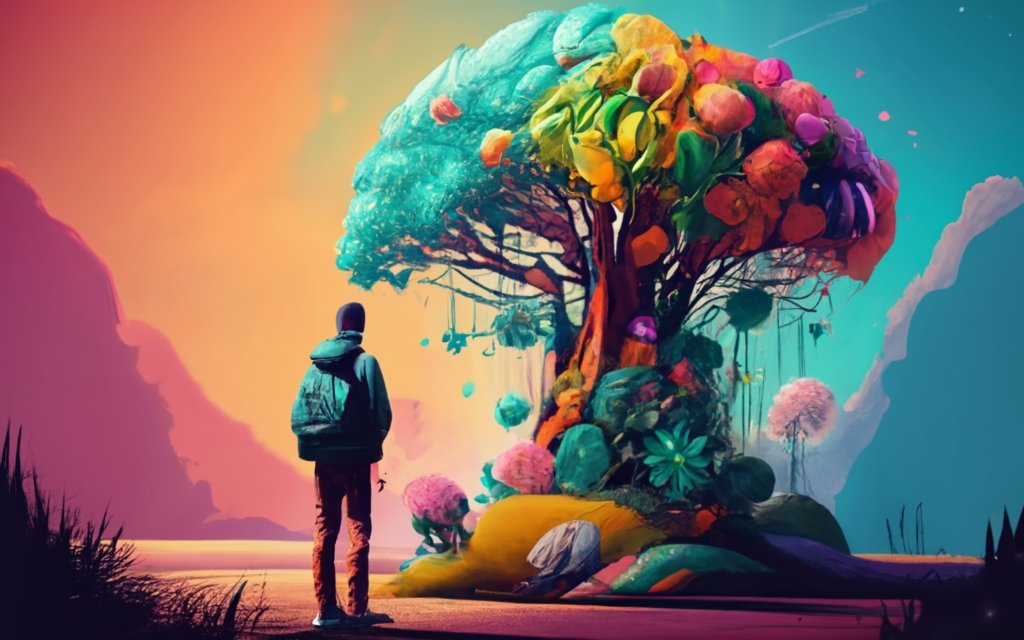Understanding Text-to-Image AI: How It Works and Popular Options

This image was created with Ideogram text to image AI, using the prompt “How Ai can help you grow”
Today we’re diving into the fascinating world of Text-to-Image AI. Imagine being able to convert your thoughts, in text form, into an image — almost like magic, isn’t it? Well, in the realm of artificial intelligence, this “magic” is becoming more and more real. Let’s explore how it works and list some popular text-to-image AI platforms you might want to check out.
How Does Text-to-Image AI Work?
1. Understanding Text Input
The first step in the process involves the AI understanding what the text is asking for. Natural Language Processing (NLP), a subfield of AI, comes into play here. The AI takes the text and tries to figure out what objects, actions, or scenarios it describes.
2. Generating an Outline
After understanding the text, the AI begins to generate a rough outline of what the image should contain. This step might involve deciding the placement of objects, background setting, and the overall layout.
3. Filling in the Details
The AI then fills in the details, using a vast dataset of images it’s been trained on to figure out things like texture, color, shading, and other intricate features.
4. Refinement
Finally, the AI goes through several iterations to refine the image, making sure it aligns closely with the text description provided.
The Tech Behind It
Two popular models behind this tech are Generative Adversarial Networks (GANs) and Variational Autoencoders (VAEs). GANs have two parts: a generator that makes the image, and a discriminator that tries to figure out if the image is real or fake. The two work together to create realistic images. VAEs, on the other hand, use complex math to transform data but are generally more stable and easier to train than GANs.
Popular Text-to-Image AI Platforms
1. DALL-E
Created by OpenAI, DALL-E has the ability to generate creative and high-quality images from textual descriptions.
2. Artbreeder
Artbreeder uses GANs to let users create new images by blending existing ones and can also generate images from text inputs.
3. DeepArt
While not strictly a text-to-image generator, DeepArt can transform textual moods or themes into an art style that can then be applied to existing images.
4. Runway
Runway is an AI software platform that caters to creatives. It includes text-to-image functionalities among its many features.
5. Google’s DeepMind
Though not commercially available, Google’s DeepMind has also made strides in text-to-image generation, mainly for research purposes.
6. Ideogram
Ideogram has a major selling point, as it may have finally solved a problem plaguing most other popular AI image generators to date: reliable text generation within the image, such as lettering on signs and for company logos.
Conclusion
Text-to-Image AI is a blossoming field with immense potential, from art and entertainment to practical applications like design mockups or virtual reality environments. The next time you think of an image but don’t have the artistic skills to create it, remember: AI’s got your back!
Feel free to explore these platforms and witness the magic for yourself!
Phil is the owner and principal designer and developer at All Saints Media. He has been in the industry for over 20 years and enjoys working with clients from a variety of industries.
Phil is a 1995 graduate of Cedarville University. He has a Bachelors in History. He received his Masters in Biblical Studies from Antietam Bible Seminary in 2007. Along with being a web and graphic designer, Phil is the senior pastor at First Baptist Church of Brunswick, MD.
Phil is married, and is the father of 5 beautiful children.

